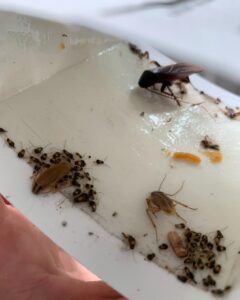
Ladybugs might seem like just cute little creatures crawling around your garden, but they’re actually masters of communication. Without a single word, these tiny insects have their own ways of sending messages to each other. It’s not just about their bright colors or patterns—there’s a whole hidden language behind their actions and behaviors.
From the way they move to their body language, ladybugs have developed subtle yet effective ways of interacting. These creatures are more than meets the eye, and the science behind their silent communication is fascinating. Let’s take a closer look at how ladybugs manage to talk to each other without saying a thing.
How do ladybugs communicate with each other without making sounds?
Ladybugs communicate with each other primarily through chemical signals, visual cues, and behaviors, rather than sounds. One of the most common forms of communication is using pheromones, which are chemical signals that ladybugs release to convey information.
For example, when a ladybug is stressed or threatened, it can secrete a yellow fluid from its legs as a warning signal, deterring predators and alerting other ladybugs of potential danger.
Ladybugs also use coloration as a form of communication. Their bright red or orange bodies with black spots warn other creatures that they might be toxic or taste unpleasant.
Additionally, ladybugs may communicate through movement and aggregation behaviors, such as clustering together in large groups during hibernation or in areas rich in food sources. These behaviors help them signal to others that the area is safe or favorable for feeding or nesting.
What signals do ladybugs use to warn others about danger?
Ladybugs use several signals to warn others about danger:
- Chemical Secretion: When threatened, ladybugs secrete a yellowish fluid from their legs, known as “reflex bleeding.” This fluid has a strong odor and contains toxins that deter predators. The fluid serves as both a warning and a defensive mechanism, signaling that the ladybug is not a desirable meal.
- Bright Coloration: Ladybugs’ vivid red or orange coloration with black spots acts as a visual warning to predators. This is an example of aposematic coloration, signaling to potential predators that the ladybug may be toxic or distasteful and should be avoided.
- Play Dead (Thanatosis): Ladybugs may engage in thanatosis, or playing dead in extreme situations. By staying motionless and retracting their legs, they appear unappetizing or unsuitable for consumption.
- Aggregating Behavior: During danger or hibernation, ladybugs may cluster together in large groups. This behavior may act as a collective defense mechanism, where the large number of ladybugs makes it more difficult for predators to target individual ladybugs.
These signals help ladybugs avoid becoming prey and enhance their survival in the wild.
How do ladybugs find mates using nonverbal communication?
Ladybugs rely on nonverbal communication to find mates, primarily using chemical signals, visual cues, and behavior. Here’s how they do it:
- Pheromone Release: Female ladybugs secrete specific pheromones to signal their readiness to mate. These chemical signals can attract males from a distance, guiding them to the female. The male ladybug detects these pheromones using specialized sensory receptors on their antennae.
- Coloration: While not directly related to mating behavior, the vivid coloration of ladybugs plays a role in their overall communication. Bright red or orange bodies with black spots act as a visual cue for predators and potential mates, signaling their species and fitness.
- Behavioral Cues: Once a male locates a female using pheromones, he may engage in courtship behaviors. These include following her movements, showing interest, and sometimes performing a brief display of wing-flapping or other subtle movements to communicate his intent. These behaviors are signals of the male’s readiness to mate and suitability as a mate.
- Proximity and Aggregation: Ladybugs often congregate in large groups, especially during mating season. The presence of many ladybugs in one area increases the likelihood of encountering a mate, as males are attracted to the congregation of females.
What role do colors and patterns play in ladybug communication?
Colors and patterns play a significant role in ladybug communication, both in signaling to predators and potential mates. Here’s how:
- Aposematic Signaling: The bright red or orange coloration with black spots serves as a warning signal to predators. This type of aposematic coloration indicates that the ladybug may be toxic or unpalatable, deterring potential predators from attacking. The bold colors are a visual cue that helps predators associate the ladybug with an unpleasant taste or harmful experience.
- Species Identification: The color and pattern of spots vary among ladybug species. This allows ladybugs to identify each other and find mates. The unique color patterns act as visual markers, helping individuals recognize members of the same species, which is important for successful mating.
- Attracting Mates: While not as prominent as the warning role, colors can also indirectly aid in attracting mates. Some studies suggest that males may be more attracted to females with brighter or more distinct color patterns, potentially as an indicator of health and genetic fitness.
- Defensive Display: In some cases, ladybugs may display their colorful patterns when threatened. By exposing their bright colors, they signal to other ladybugs or animals that they are capable of defending themselves, enhancing their overall survival strategy.
Learn More About Ladybugs From the Experts
Ladybugs have their own silent yet effective language through colors, patterns, and even chemical signals! These small creatures use vibrant colors to warn predators and unique behaviors to protect themselves.
Interested in learning more about these fascinating insects? Let Freedom Pest Services help you understand how the tiniest creatures have mastered communication—no words necessary! Contact us today to explore the wonders of nature and keep your home pest-free with our expert services.
